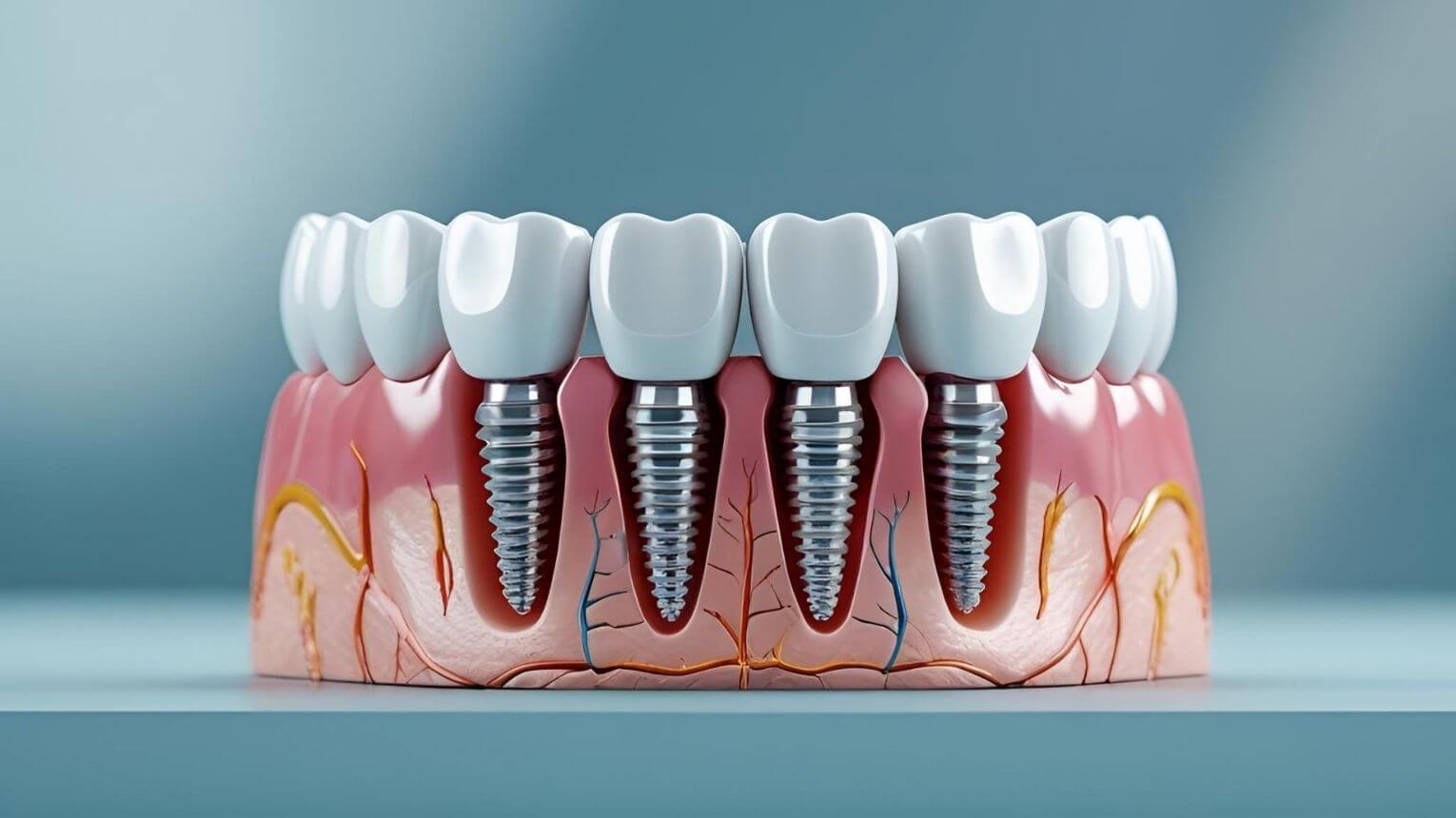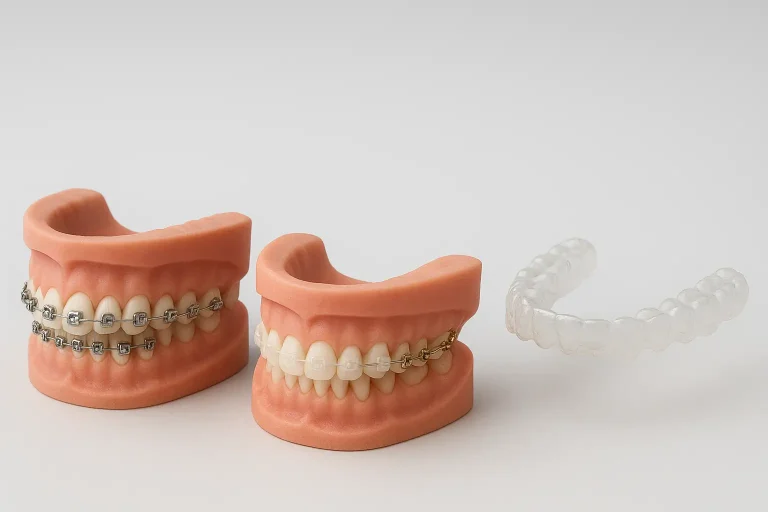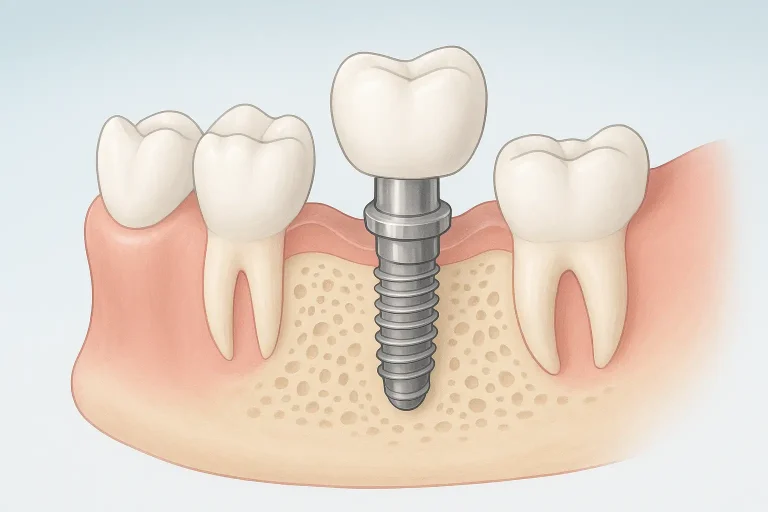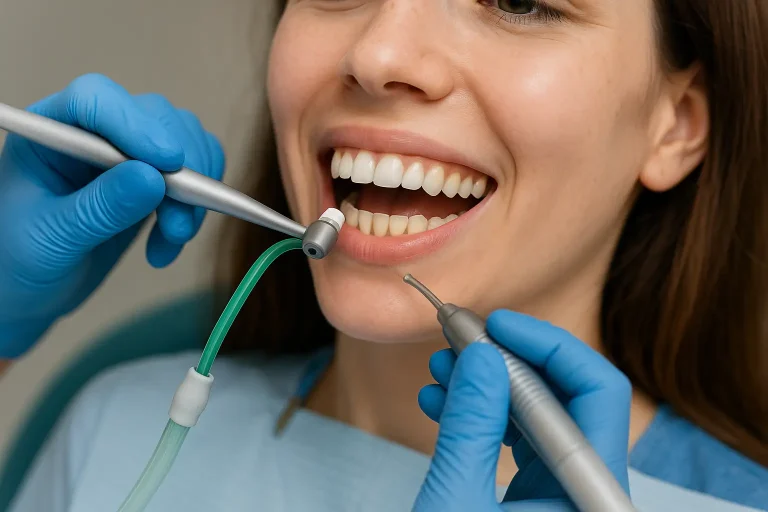Book Appointment Now

Stages of Dental Implants from Start to Finish: Everything You Need to Know
From the First Step to Your New Smile: Your Complete Guide to Dental Implants
Imagine smiling confidently again, without thinking twice about covering your mouth or avoiding laughter. Dental implants are not just a cosmetic procedure—they are a modern, permanent solution to replace missing teeth and restore your quality of life—from natural chewing and proper speech to an attractive appearance.
Before starting this precise medical journey, it’s essential to understand the full roadmap. Dental implantation is not a one-step process but a well-planned series of stages, each with its importance and impact on long-term success.
In this article, we’ll guide you step-by-step through the dental implant journey, from pre-planning to placing the final crown. You’ll learn about each stage clearly, with practical tips and answers to key questions—without any complication.
Stage One: Evaluation and Pre-Planning
Here’s where the story begins.
Before any surgical intervention, the dentist performs a comprehensive examination of the mouth and gums to assess the condition of the remaining teeth and surrounding tissues. Since dental implants require a strong foundation, panoramic X-rays and 3D scans are used to measure bone density and quality and determine the exact implant sites.
But the evaluation doesn’t stop at the mouth. The doctor also reviews the patient’s general health—from blood sugar levels to chronic conditions like osteoporosis or heart disease. The goal is to ensure the body is ready to handle the procedure and recover smoothly.
Based on this information, the dentist creates a customized treatment plan. This plan includes:
- Number of implants required
- Type of implant (traditional or immediate)
- Implant method (direct, with incisions, or using digital techniques)
- Estimated timeline from the first session to crown placement
Smart, precise planning is the solid foundation for successful implantation.
Stage Two: Extraction of the Damaged Tooth (If Present)
When is tooth extraction necessary?
Dental implants don’t always start with a completely toothless jaw. Often, there’s a broken or severely damaged tooth that can’t be restored with a filling or crown. In such cases, extraction is the best step to prepare the mouth for implants.
The dentist will recommend extraction when:
- The root is fully broken or non-functional
- There are chronic gum infections around the tooth
- The tooth has undergone multiple failed root canal treatments
- Signs of bone infection are present
Extraction isn’t the end—it’s a smart transitional step toward a more stable, lasting solution.
Traditional vs. Immediate Implants After Extraction
Post-extraction, two main options are available:
Traditional Implants
- Wait for bone and gums to heal first (usually 3–6 months)
- Implant placement is done after healing
- Suitable for patients needing bone grafts or with active infections
Immediate Implants
- Done in the same session as tooth extraction
- Saves time and reduces the number of procedures
- Requires strong, stable bone around the extraction site
- Prevents bone loss that can happen during the waiting period
The right choice depends on careful evaluation. Immediate implants are tempting for those wanting a quicker solution—if conditions are ideal.
Stage Three: Implant Surgery
Surgical Steps: From Anesthesia to Titanium Implant
This is where planning becomes action.
After ensuring jaw readiness, the dentist applies local anesthesia to the target area—this is usually pain-free and done in the clinic, with no need for general anesthesia.
Surgery involves:
- A small incision in the gum to access the bone
- Precision drilling into the bone to create space for the implant
- Inserting the implant (usually titanium) to act as the artificial root
- Suturing the gum over or around the implant, depending on type and treatment plan
Implant placement usually takes 30–90 minutes per implant, and multiple implants can be done in one session.
Implant Types and Gum Stitching Methods
Implants vary by case:
Traditional implants:
- 8–14 mm in length, most commonly used
Short or mini implants:
- For cases with limited bone
Wide-diameter implants:
- Suitable for back teeth needing more pressure support
Gum Stitching Techniques:
Closed (Submerged):
- Implant is fully covered and reopened later to add the abutment
Open (Non-submerged):
- Implant remains exposed or with a healing cap, making abutment placement easier without more surgery
Every detail of this surgery is precisely designed to ensure stability and complete bone integration.
Stage Four: Osseointegration Period
What is Osseointegration and Why is it Crucial?
Osseointegration is the stage where the metal implant becomes a functional part of the jaw. The natural bone grows around the implant, securing it like a natural root.
This stage is invaluable:
- Ensures long-term implant stability
- Prevents crown shifting or falling
- Reduces the risk of failure or surrounding infections
Without successful osseointegration, the process can’t proceed to the crown stage.
Typical Healing Time and Variability
Osseointegration usually takes 3–6 months, but this varies depending on:
- Bone density and quality (denser bone integrates faster)
- Implant location (lower jaw heals faster than upper)
- Patient age and health (diabetics or smokers may take longer)
- Bone graft presence (if used, healing takes longer)
It’s not just about time—but also bone readiness and environmental suitability for implant success.
Temporary Restorations During Healing
No one likes a gap—especially in a smile!
So, temporary restorations (like bridges or temporary crowns) are often provided during this period:
- Mainly cosmetic, especially for front teeth
- Help with speech and chewing
- Do not directly touch or affect the implant
Still, they are temporary. True beauty begins with the final crown.
Stage Five: Placing the Abutment
What is the Abutment and Why is It Important?
The abutment is the small metal piece placed on top of the implant. It connects the implant to the final crown.
Think of it as the smart connector:
- Holds the crown in place
- Transfers chewing force to the implant and bone
- Makes crown maintenance or replacement easier
Placing the abutment means the implant is now load-ready—but no rush.
Minor Surgery Before Crown Placement
Once osseointegration is confirmed, a simple surgery is performed:
- A small gum opening to expose the implant head
- Removal of the healing cap (if present)
- Placement of the metal abutment
- Gum is left to heal around the visible abutment
This step is usually done in-clinic without general anesthesia.
Healing Time for the Gums
After abutment placement, the gums need 1–2 weeks to heal and adapt to its shape. This depends on:
- Body’s healing response
- Implant type and depth
- Post-op oral hygiene
Once healing is complete, the mouth is ready for the final crown.
Stage Six: Final Crown or Prosthetic
Taking Impressions and Designing the Final Crown
Once gums heal around the abutment, the final phase begins—designing and crafting the crown, bridge, or denture.
This includes:
- Taking accurate impressions of the teeth and gums using mold or 3D scanner
- Considering implant location relative to adjacent teeth and bite
- Sending data to the lab to create the crown using high-quality materials (ceramic, zirconia, porcelain)
The goal? An artificial tooth indistinguishable from the real thing—in look and function.
Choosing the Right Shade and Shape
Aesthetics are no accident.
- Shade is chosen based on neighboring teeth using a shade guide
- Shape is tailored to the patient’s smile, face, and jaw for comfort and harmony
- Some advanced clinics offer a mock-up to preview the result before final placement
The crown isn’t just a cover—it’s the signature on your new smile.
Final Crown Fitting and Adjustment
Once the crown is ready, the fitting session includes:
- Initial trial to ensure comfort and fit
- Minor adjustments to edges or height if needed
- Bonding the crown to the abutment using strong medical adhesive
- Final bite check to ensure no excess pressure or contact
This step completes the treatment journey—and begins a new one: smiling with confidence.
Stage Seven: Post-Implant Care and Follow-up
Key Care Instructions After Implant Placement
An implant is like a new car—it needs smart care to last.
- Brush twice daily with a soft brush and gentle toothpaste
- Use floss or special tools to clean around the abutment
- Avoid smoking—it impairs gum blood flow and integration
- Maintain a balanced diet rich in vitamin D and calcium for bone health
This isn’t luxury—it’s a long-term investment.
Regular Follow-up Visits
Once the procedure ends, smart monitoring begins:
- First follow-up is usually 2 weeks after crown placement
- Then, checkups every 3–6 months to assess:
- Implant stability
- Gum and bone health
- Crown and abutment condition
Early detection of any issue makes it easier to address.
Need consultation or treatment? Explore our dental services or book your appointment now via website, WhatsApp, or phone. (+20)1096363526
Additional Treatments for Optimal Results
In some cases, extra treatments may be needed for 100% success:
- Bone grafting if bone weakens or erodes
- Gum laser or surgery for tissue support
- Adjusting the crown or abutment if bite changes or pressure increases
Dental implants don’t end with placement—they end with lifelong stability.
Summary Table of Dental Implant Stages
| Stage | Description | Approximate Duration |
| Evaluation & Planning | Exams, X-rays, and full planning | One or more sessions |
| Tooth Extraction | Removing damaged tooth (if needed) | Depends on case |
| Implant Surgery | Placing the implant in the jawbone | 30 minutes to 2 hours |
| Osseointegration | Bone healing around the implant | 3 to 6 months |
| Abutment Placement | Connecting implant to final crown | A few weeks |
| Crown Placement | Final tooth fitting and adjustment | 1 to 2 weeks |
| Follow-up & Care | Ongoing cleaning and checkups | Ongoing after placement |
Tips for Dental Implant Success
Because success isn’t just the doctor’s job—it starts with your commitment. Follow these tips to keep your new smile in perfect shape:
Maintain oral hygiene:
- Brush with a soft brush, floss regularly, and focus on the implant area
Avoid smoking
- It reduces gum blood flow and raises failure risk
Follow your doctor’s instructions:
- From meds to meals to hygiene—don’t guess
See your dentist at the first sign of pain or inflammation:
- Early action is easier and more effective
Frequently Asked Questions About Dental Implants
1. Is dental implant surgery painful?
Usually not. Local anesthesia makes the procedure pain-free. Mild discomfort or swelling after surgery can be managed easily with painkillers prescribed by the doctor.
2. How long do implants last?
They can last 15–25 years or more with proper care and follow-up—making them one of the most effective restorative dental options.
3. Are dental implants suitable for everyone?
Not always. The patient must be in good general health, have enough strong jawbone, and no uncontrolled conditions like diabetes or osteoporosis. The dentist will assess your case thoroughly before approval.
4. What’s the difference between a crown, bridge, and denture?
Crown: Used for a single implant
Bridge: Replaces several teeth, fixed on multiple implants
Denture: Mounted on several implants for full/partial tooth replacement
5. Do implants require special care afterward?
Yes. Maintain oral hygiene, visit the dentist regularly, and avoid bad habits like smoking or teeth grinding.
Conclusion: Your New Smile Begins with a Decision
Dental implants aren’t just a procedure—they’re a journey to a more comfortable, confident life. It’s an investment in your ability to eat, speak, and smile freely.
If you’re considering implants, understanding each stage is key to making an informed, smart decision. Every step from evaluation to the final crown leads to long-lasting results.
Remember: Your new smile doesn’t start at the clinic—it starts with awareness.
Think, ask, prepare… and begin your journey with a smile you truly deserve.
Ready for Dental Implants? Now is the Perfect Time!
Get ready to restore your smile and confidence with a thoughtful, safe, and effective procedure.
Book your consultation now and begin your journey to a lifelong smile.
Don’t delay your smile—contact us today!
Book an appointment or reach us via WhatsApp:
Dr. Mohamed Fahmy Clinic
Address: 25XX+J7G, next to Kaddoura, 74 El-Gamaa El-Dowal St., above Nile Lab, Dokki, Giza 12651
Phone & WhatsApp: 01096363526







